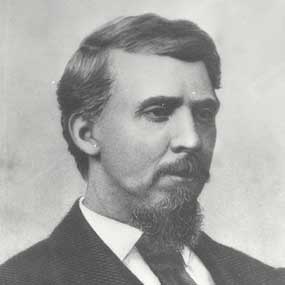 |
 | |
  | |
|
|
|
|
Fort Smith National Historic Site
Judge Isaac C. Parker
|
|
|
|
|
| |
 |
 |
| Fort Smith NHS | | Judge Isaac C. Parker |
 |
"I have ever had the single aim of justice in view... 'Do equal and exact justice,' is my motto, and I have often said to the grand jury, 'Permit no innocent man to be punished, but let no guilty man escape.'"
-Judge Isaac C. Parker, 1896
For twenty-one years, Judge Isaac C. Parker held the bench of the U.S. Court for the Western District of Arkansas. His tenure was unique in the history of the federal judiciary; while most U.S. district judges toiled away on civil cases, Parker heard thousands of criminal complaints involving disputes and violence between Indians and non-Indians. He sentenced 160 people to death, and for fourteen years he did so while the condemned had no right of appeal.
Sensational cases and mass executions overshadowed Parker's contributions in rehabilitating offenders, reforming the criminal justice system, and advocating the rights of the Indian nations. In Fort Smith he tried to create, in his own words, "the moral force of a strong federal court."
Remembered in Western novels and films as a "Hanging Judge," Isaac Parker's real career and accomplishments in Fort Smith are far more fascinating and complicated. Use the links on this page to learn more about Judge Parker and his time at Fort Smith.
|
|
|
|

Judge Parker's Biography
link to story of Parker's life
more... | | 
Executions at Fort Smith
From 1873 through 1896, eighty-six men were executed on the gallows at Fort Smith.
more... | | 
U.S. Deputy Marshals
The federal court employed deputy marshals, baliffs, jailers, and other court personnel.
more... | | 
Outlaws Tried at Fort Smith
Stories of some of the outlaws tried in the court at Fort Smith.
more... | |
|
|
|
|
|
|
|
 |
|
Did You Know?
A woman was responsible for the building of a modern federal jail at Fort Smith, AR, in 1888. Anna Dawes, daughter of Sen. Dawes of MA, visited the "Hell on the Border" jail in 1885 and wrote an article describing its conditions. When read in Congress, money was quickly approved for a new jail.
|
|
|
|
Last Updated: September 11, 2006 at 17:56 EST |






